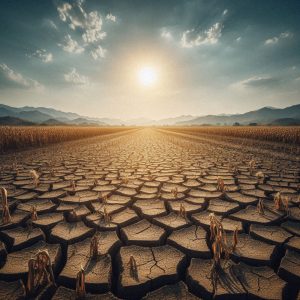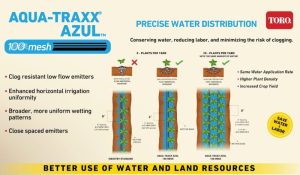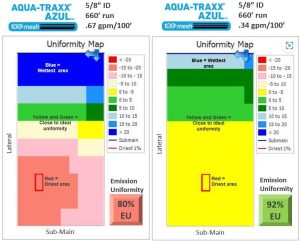In the wake of the drought, the Midwest is seeing a shift from pivot and furrow irrigation to drip irrigation on some acres. In a recent and great article by Corn&Soybean Digest, reporter Larry Stalcup wrote about making the switch to drip irrigation. Larry interviewed Don Anthony, a Lexington, Nebraska, grower to learn about his experiences with subsurface drip irrigation (SDI), as well as Freddie Lam, an agricultural engineer and irrigation researcher at Kansas State University.
According to Freddie Lam of Kansas State University, more than 300,000 acres are now drip irrigated in the Great Plains, much of which is cotton. But many growers in the western Corn Belt and southern High Plains are also making the shift to drip irrigation for other crops such as corn and soybeans.
Why the shift? To put it simply, drip irrigation uses less water, reduces energy use, and maintains yields (or in some cases, increases yields). Given dwindling aquifers, less rainfall, and/or government restrictions, it’s no wonder growers are looking for more efficient irrigation techniques.
Don Anthony, the Lexington, Nebraska, grower who switched to subsurface drip irrigation (SDI) on his corn and soybeans several years ago, and has seen the benefits of drip irrigation first-hand. According to Anthony, “(h)e installed his first drip system in the spring of 2006 using Toro Micro-Irrigation equipment. It relies on ¾-in. Toro Aqua-Traxx drip tape…buried 15 in. underground.” The result? Anthony uses less water and energy, and can irrigate the corners where his pivots couldn’t reach. The system has already paid for itself and he has been able to keep his corn yields at approximately 200 bu./acre and his bean yield at about 65 bu./acre.
In this article you will also learn about drip irrigation system maintenance, why SDI is preferable to LEPA, and how to calculate your potential savings with drip irrigation using the Drip Irrigation Payback Wizard.
For more information from K-State, visit the K-State site: http://www.ksre.ksu.edu/sdi/.




